Tet, the Vietnamese Lunar New Year, is not only a time for family gatherings and cultural traditions but also a celebration filled with delicious food. In this article, we will explore traditional Vietnamese New Year dishes, their cultural meanings, and why they remain an essential part of Tet cuisine for families across the country. Let’s find out more with Hoi An Scooter Rental right below this article.
The Cultural Significance of Traditional Vietnamese New Year Dishes
When Tet arrives, food becomes more than just nourishment; it turns into a powerful symbol of heritage and blessings. Each dish on the Tet table carries wishes for health, prosperity, and happiness. Families spend days preparing these meals together, reinforcing bonds and honoring ancestors. Through traditional Vietnamese New Year dishes, people express gratitude for the past year and welcome the new one with hope.
Must-Try Traditional Vietnamese New Year Dishes
Tet celebrations would not feel complete without a variety of iconic dishes. From savory cakes to refreshing sides, each food item contributes to the balance of flavors and traditions. Let’s explore the must-try dishes that you will find on nearly every Tet table.
Banh Chung and Banh Tet – The Heart of Tet Cuisine
Among the most recognizable traditional Vietnamese New Year dishes, Banh Chung and Banh Tet stand out as timeless icons. Banh Chung, a square sticky rice cake wrapped in dong leaves, represents the earth and is especially beloved in Northern Vietnam.
In contrast, Banh Tet, popular in the South, takes on a cylindrical form symbolizing the sky. Both cakes are filled with sticky rice, mung beans, and pork, then boiled for hours. Preparing them is a family event, with members gathering to wrap, cook, and share stories overnight.
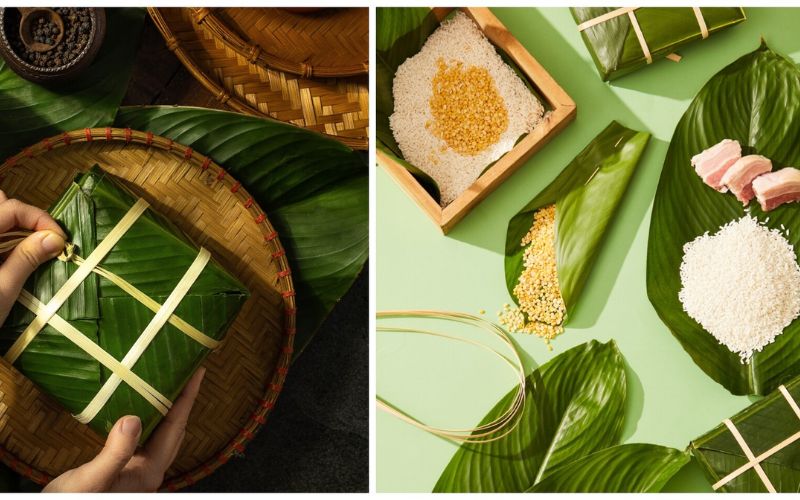
Pickled Vegetables (Dua Muoi, Dua Cai) for a Refreshing Balance
Tet meals can be rich, heavy, and meaty, which is why pickled vegetables are indispensable. Known as Dua Muoi or Dua Cai, these tangy and crunchy side dishes cleanse the palate and add freshness to the feast.
Traditionally, families prepare pickles a few days before Tet, using carrots, radish, mustard greens, or cabbage soaked in a mixture of vinegar, salt, and sugar. The result is a flavorful contrast that makes heavier foods like Banh Chung and pork dishes easier to enjoy.
Read more: Best places to visit september: Travel guide for an unforgettable journey
Boiled Chicken – A Symbol of Prosperity
Boiled chicken is one of the most respected traditional Vietnamese New Year dishes. Served whole, with golden skin, it is a centerpiece on ancestor worship altars. The chicken symbolizes prosperity and new beginnings, often paired with aromatic lime leaves.
Families carefully prepare and present it during New Year’s Eve or the first day of Tet, then share it as part of the family meal. Its simple preparation belies its important role in Tet rituals.
Gio Lua (Vietnamese Pork Sausage) for Festive Feasts
Gio Lua, also called Vietnamese pork sausage or pork roll, is another essential dish. Made from finely pounded pork seasoned with fish sauce, it is tightly wrapped in banana leaves and boiled until firm. Gio Lua is prized for its smooth texture and savory taste.
During Tet, it is often sliced and served with sticky rice, Banh Chung, or noodles. The dish’s long shelf life also makes it convenient for extended celebrations.
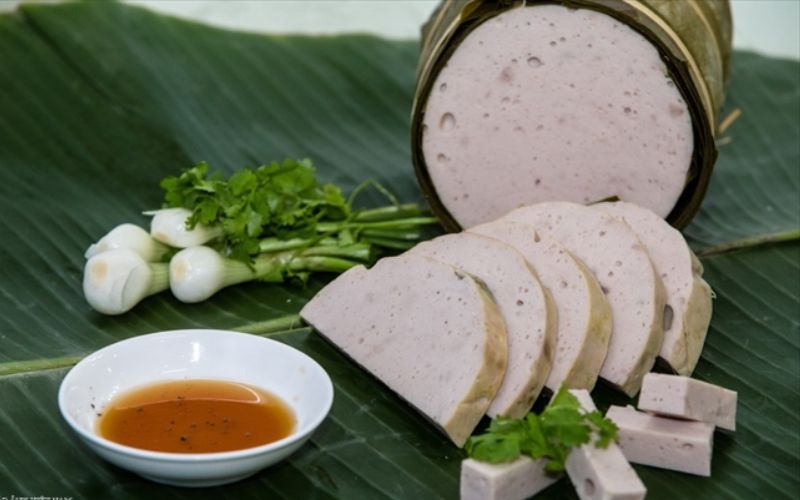
Sticky Rice (Xoi Gac, Xoi Do, Xoi Dau Xanh)
Sticky rice, or xoi, adds a splash of color and meaning to Tet meals. Xoi Gac, with its bright red hue from gac fruit, symbolizes happiness and luck. Xoi Dau Xanh, made with mung beans, represents fertility and abundance.
Families prepare different types of xoi depending on regional preferences, but all versions are considered auspicious. Sticky rice is often served on ancestral altars as offerings before being enjoyed by the family.
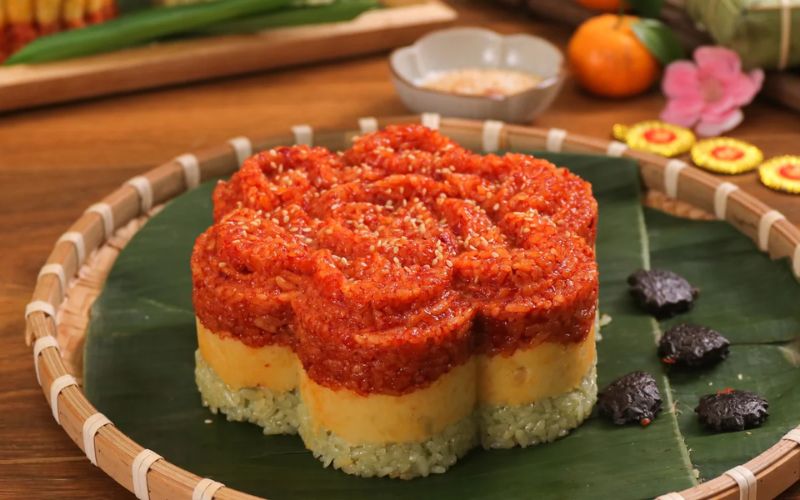
Regional Variations of Traditional Vietnamese New Year Dishes
Vietnam’s diverse geography and culture have led to unique Tet cuisines across the North, Central, and South. While the core meaning of food remains the same, flavors and cooking styles differ.
Northern Vietnam Tet Cuisine
In the North, Banh Chung takes center stage alongside pickled onions and frozen meat (thit dong). Meals are often more restrained, focusing on balance and harmony. Dishes are prepared with mild seasoning to highlight natural flavors. Northern Tet tables reflect the cultural emphasis on tradition and simplicity.
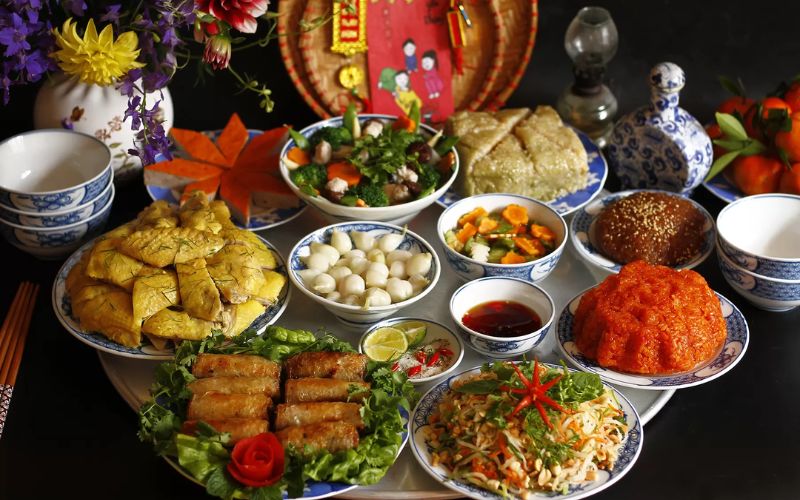
Central Vietnam Tet Cuisine
The Central region is famous for its bold and spicy flavors. Families often prepare Banh Tet with both savory and sweet fillings. Other specialties include Tre Hue, Nem Chua, and various dishes seasoned with chili and fish sauce. Central Tet cuisine showcases the region’s passion for intense, memorable tastes.
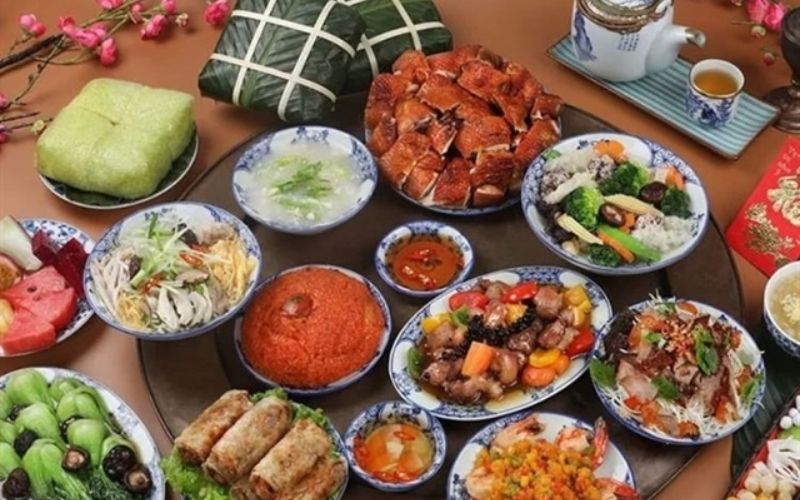
Southern Vietnam Tet Cuisine
In the South, meals are generous, sweet, and hearty. The iconic Thit Kho Trung, caramelized pork and eggs, is a favorite that symbolizes unity and prosperity. Southern families also prepare sweet versions of Banh Tet with banana or beans. The flavors here are rich and comforting, embodying the region’s open and festive spirit.
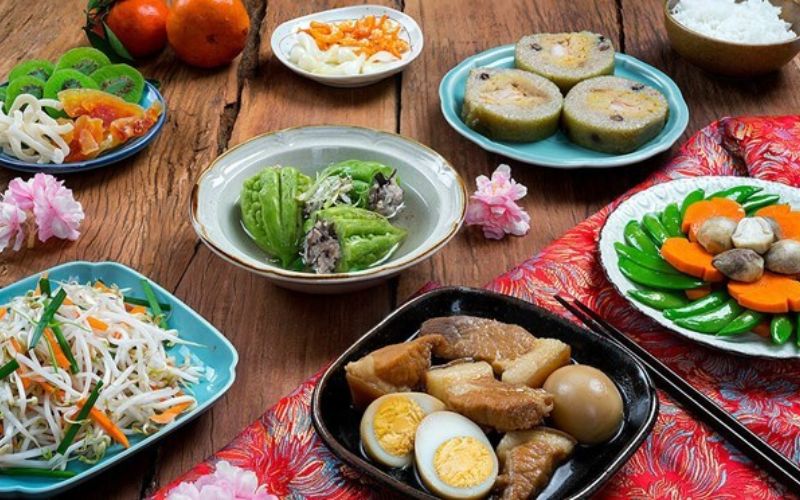
Prices of Traditional Vietnamese New Year Dishes in Modern Times
Today, while many families still make Tet dishes at home, buying from markets is also common. Prices can vary depending on quality, size, and location, but here is a general overview:
| Dish | Average Price (VND) | Notes |
| Banh Chung | 120,000 – 200,000 | Handmade, varies by size |
| Banh Tet | 80,000 – 150,000 | Popular in Southern Vietnam |
| Boiled Chicken | 200,000 – 300,000 | Depends on size and quality |
| Gio Lua | 150,000 – 250,000/roll | Widely sold in Tet markets |
| Sticky Rice (Xoi) | 30,000 – 50,000/portion | Affordable and common |
| Pickled Vegetables | 40,000 – 70,000/jar | Homemade or market-bought |
These prices give travelers an idea of what to expect when shopping during Tet, whether buying food for immediate enjoyment or as gifts.
Tips for Travelers to Experience Tet Cuisine in Vietnam
For visitors, Tet offers a once-a-year opportunity to taste authentic local flavors and connect with Vietnamese culture. Experiencing traditional Vietnamese New Year dishes as a traveler requires a bit of planning but is incredibly rewarding:
- Visit Tet markets: Explore colorful stalls selling Banh Chung, Banh Tet, sticky rice, and festive treats made by local families.
- Try street food: Many food vendors offer Tet specialties during the festival—perfect for sampling in small portions.
- Join a family meal (if invited): Respect local customs by waiting for the host to serve and trying a little of everything offered.
- Learn the symbolism: Each dish has meaning—Banh Chung for earth, Xoi Gac for luck, and boiled chicken for prosperity.
Read more: Thanksgiving Travel US Canada: Tips, Destinations, and Essential Guide
Enjoy Tet Like a Local with Hoi An Scooter Rental
If you’re in Hoi An during Tet, exploring food markets is a must. Renting a scooter is the best way to experience the festive atmosphere and taste authentic Tet specialties. With Hoi An Scooter Rental, you can easily ride through the lantern-lit streets, stop at local markets, and discover hidden food stalls serving Tet dishes.
Hoi An Scooter Rental – Motorbike rental in Hoi An only
WhatsApp: +84 9356 40064
Conclusion
Traditional Vietnamese New Year dishes are more than just meals; they are cultural treasures that connect families and preserve heritage. From Banh Chung in the North to Thit Kho Trung in the South, each dish tells a unique story of Vietnam’s identity and values.
For travelers, Tet offers a chance to taste these specialties firsthand and embrace Vietnamese hospitality. And if you’re visiting Hoi An, renting a scooter will give you the freedom to explore local Tet markets and fully enjoy this culinary celebration.
